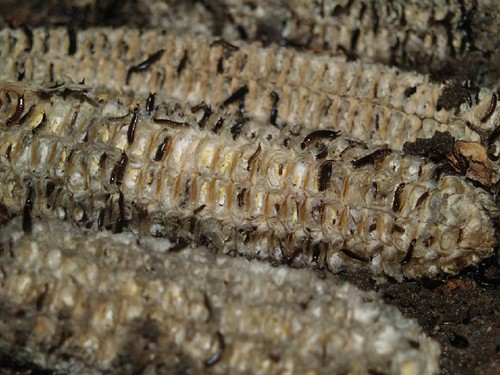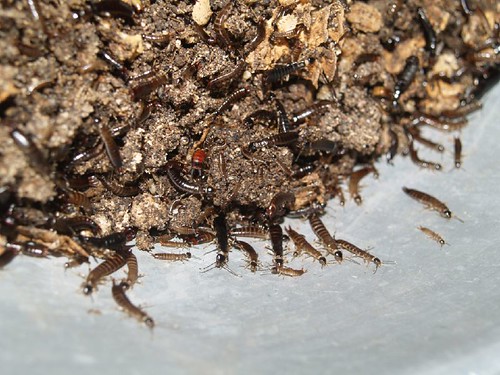 Contributed by Hazel V. Antonio, PhilRice
Contributed by Hazel V. Antonio, PhilRice
What seemed to be a nightmare-causing insect for most of us could actually be the farmers’ comfort-causing pal? That’s the earwig, the insects in the order Dermaptera characterized by membranous wings folded underneath short leathery forewings. Some believe that earwigs transmit disease, and harm humans and animals because of their nickname, pincher bug. But Dante Sabacan, an agricultural technologist in Sto. Domingo, Nueva Ecija, fearlessly grows this insect to disprove these beliefs and prove its significance to farmers.
Culturing earwigs
 Compared to other possible insect pest control such as spider, dragonfly, or trichogramma, earwig is easiest to culture. After mating, a pair can produce as much as 355 eggs, which hatched after 7. Earwigs paralyze the bodies of their preys, usually armyworms, thus preventing them from damaging crops even before they eat them. Sabacan realized all these during an IPM refresher course in 2004.
Compared to other possible insect pest control such as spider, dragonfly, or trichogramma, earwig is easiest to culture. After mating, a pair can produce as much as 355 eggs, which hatched after 7. Earwigs paralyze the bodies of their preys, usually armyworms, thus preventing them from damaging crops even before they eat them. Sabacan realized all these during an IPM refresher course in 2004.
“To successfully grow earwig, the soil must first be sterilized by frying to prevent the accumulation of fungus. Corn cubs are used to serve as nests and to estimate earwig population. Each container is also covered with a net to protect them from lizards and flying insects while its surroundings are sprayed with ant repellant. Water and crushed dog food are given twice a week. And finally, daily checks are done in the morning, after work, and before bed time,” Sabacan explained.
Earwig vs. insecticide
 During the 1950s, rice farmers have started to rely in insecticides. Today, they spend as much as PhP2,000 while onion farmers spend as much as PhP35,000 for insecticides alone.
During the 1950s, rice farmers have started to rely in insecticides. Today, they spend as much as PhP2,000 while onion farmers spend as much as PhP35,000 for insecticides alone.
Romulo Salamanca, is one of the farmers who usually lose 25% yield despite using different insecticides. In November 2005, he related his dilemma to Sabacan.
Sabacan asked for earwigs from the Regional Crop Protection Center (RCPC) and personally distributed them in the farmer’s field. Resulting in a decrease in damages from around 25% to just 5%, with insignificant yield loss since damages are merely at the tip of the corn. He then used earwig in his 1.2 hectare rice farm, yielded more, and saved more than PhP2,000, labor, and time.
Mario Domingo, a farmer in Brgy. Dolores for more than 30 years, is a firm believer of the “earwig technology.” He started to use it in 2006 with his three-hectare farm planted with rice, tomatoes, saving as much as PhP15,000. This season, he also used earwig in his onion field.
“It is worth repeating. This season, I did not use any chemical with my onion and I saved around PhP70,000 in my two-hectare farm by using earwig and PhilRice’s Vesicular Arbuscular Mychorrizae (VAM),” Domingo said.
Purely service
Sabacan grew these earwigs at his own initiative. He grows around 50,000 earwigs per week in his home by picking corn cubs in the streets. “But it is all worth it because this earwig population can protect around five hectares a week or around 80 hectares a season,” he said.
The happiness and fulfillment of those farmers he helped inspire Sabacan to continue culturing earwig and discovering practical and environment-friendly farming practices.



Comments are closed